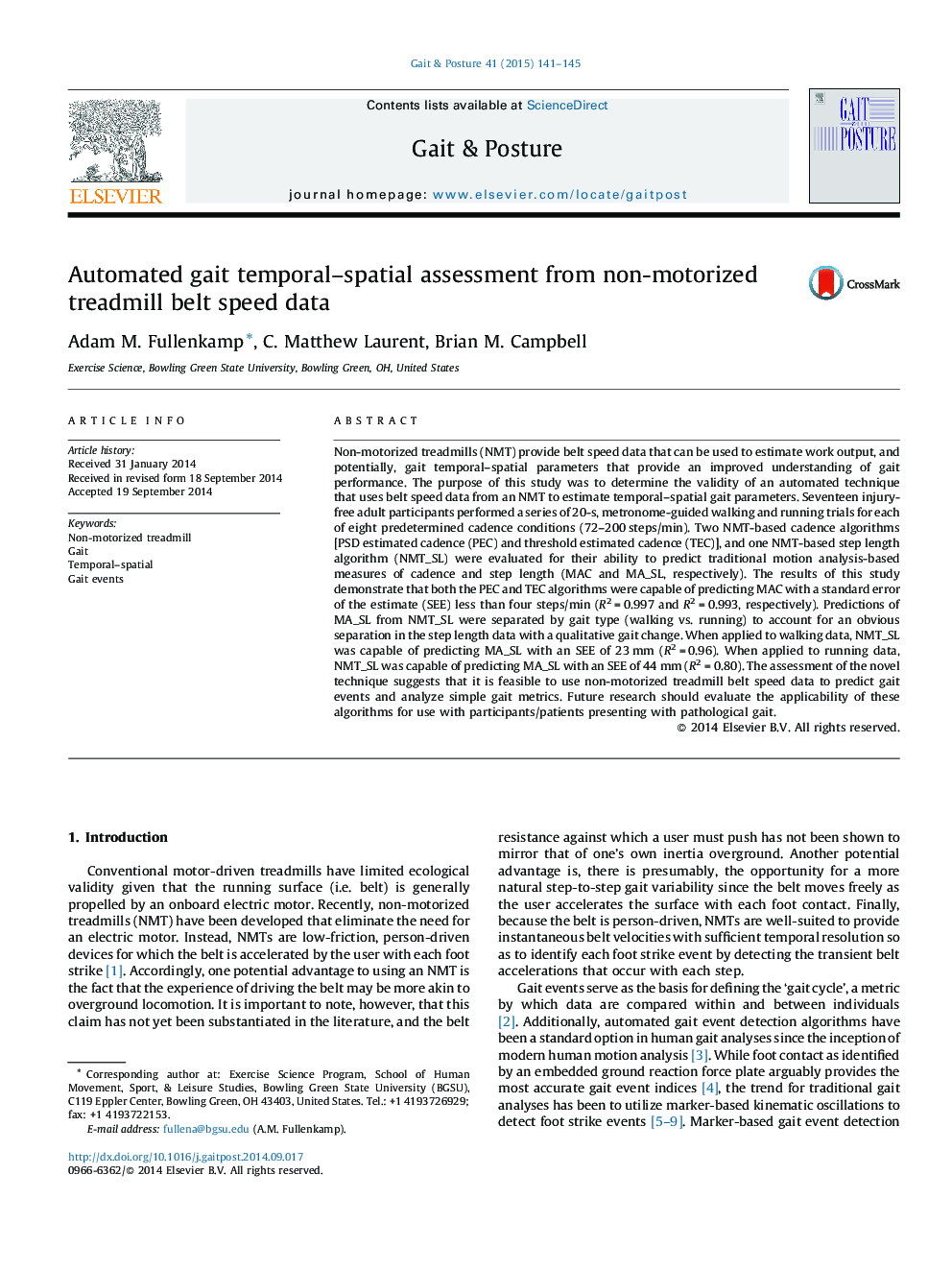| کد مقاله | کد نشریه | سال انتشار | مقاله انگلیسی | نسخه تمام متن |
|---|---|---|---|---|
| 6205681 | 1265627 | 2015 | 5 صفحه PDF | دانلود رایگان |

- We present a novel algorithm for gait assessment on a non-motorized treadmill (NMT).
- We demonstrate an estimation of cadence and step length from NMT belt speed.
- Gait cadence is predicted from an NMT through a range of gait velocities.
- Step length may be predicted by separating walking and running gait metrics.
Non-motorized treadmills (NMT) provide belt speed data that can be used to estimate work output, and potentially, gait temporal-spatial parameters that provide an improved understanding of gait performance. The purpose of this study was to determine the validity of an automated technique that uses belt speed data from an NMT to estimate temporal-spatial gait parameters. Seventeen injury-free adult participants performed a series of 20-s, metronome-guided walking and running trials for each of eight predetermined cadence conditions (72-200Â steps/min). Two NMT-based cadence algorithms [PSD estimated cadence (PEC) and threshold estimated cadence (TEC)], and one NMT-based step length algorithm (NMT_SL) were evaluated for their ability to predict traditional motion analysis-based measures of cadence and step length (MAC and MA_SL, respectively). The results of this study demonstrate that both the PEC and TEC algorithms were capable of predicting MAC with a standard error of the estimate (SEE) less than four steps/min (R2Â =Â 0.997 and R2Â =Â 0.993, respectively). Predictions of MA_SL from NMT_SL were separated by gait type (walking vs. running) to account for an obvious separation in the step length data with a qualitative gait change. When applied to walking data, NMT_SL was capable of predicting MA_SL with an SEE of 23Â mm (R2Â =Â 0.96). When applied to running data, NMT_SL was capable of predicting MA_SL with an SEE of 44Â mm (R2Â =Â 0.80). The assessment of the novel technique suggests that it is feasible to use non-motorized treadmill belt speed data to predict gait events and analyze simple gait metrics. Future research should evaluate the applicability of these algorithms for use with participants/patients presenting with pathological gait.
Journal: Gait & Posture - Volume 41, Issue 1, January 2015, Pages 141-145